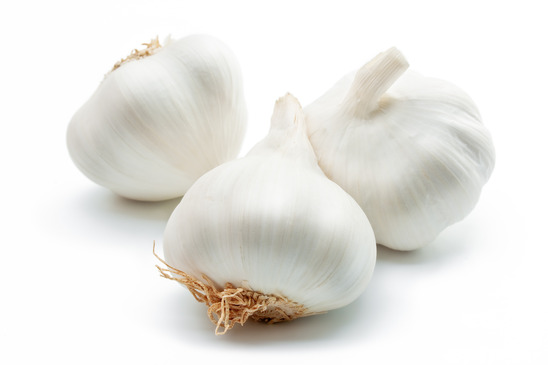Health professionals still argue about the possible link between eating pesticides on our food and developing cancer. One thing is clear though: cancer rates are rising along with public exposure to pesticides.
Consider these two facts:
- Regions with less or no pesticide exposure have significantly reduced cancer rates.
- Farmers who heavily use pesticides, when compared to the general population, tend to have higher rates of some types of cancer.
The Dangers
Pesticides are foreign toxins that the human body cannot break down properly. They kill pests, but also cause many problems in human beings: brain problems, breathing problems, immune system problems, and even sexual health problems.
Compared to adults, children are even more vulnerable to pesticide problems with their weaker immune systems. Pesticide exposure to unborn children has been linked to higher rates of childhood leukaemia.

But the worst part? Pesticide restrictions in North America are fairly relaxed. Government regulations make us feel safe, but may not guarantee public safety.
Even though those who promote pesticides will defend their safety, health statistics don’t lie.
Why Use Pesticides?
Pesticides are a cheap, easy and effective way of having bountiful crops with minimal effort. Simply put, pesticides are cost-effective.
Some crops receive pesticides more often and more openly: peaches, apples and berries. Strawberries are particularly bad.
If you eat a fruit or vegetable without a removed peel, chances are you’re eating more pesticides compared to peeled produce. For example, onions, pineapple and corn are among the safest items to eat, as they have lower levels of pesticides.
The Solutions
Avoiding pesticides isn’t as hard as you might think.
- Know where your produce comes from. A little research can go a long way.
- Grow your own produce if you can. Even without a backyard, you can still grow tomatoes or herbs on your deck or windowsill.
- Buy from local farmers and ask them what they use on their crops. Organic produce is more expensive but is well worth the extra cost.
- If you are on a budget, consider buying your unpeeled produce organically. Produce with a peel is safer from pesticides.
Arm yourself by knowing what the dangers are with pesticides. That’s the first step in avoiding these potentially dangerous chemicals.
And most importantly of all – know what you’re eating!
4 Ways Garlic Can Make You Healthier

For years, garlic has been called a health powerhouse. In fact, other cultures recognized long ago that garlic has an incredible ability to fight colds and the flu. It can even help manage blood pressure and high cholesterol.
This month, we put garlic to the test.
Garlic vs Food Poisoning
Just recently, garlic was recognized as a preventer of food poisoning thanks to a chemical called diallyl sulfide. This is what gives garlic its distinctive smell.
Campylobacter, often the cause of food poisoning from undercooked food, is fought by garlic’s diallyl sulfide.
Garlic: 1. Food poisoning: 0.
Garlic vs Antibiotics
Antibiotics can kill off healthy bacteria as well as the bacteria that make you sick. Garlic, on the other hand, is much more targeted and only attacks the harmful bacteria.
Garlic also acts as an antiviral and antifungal – boosting your immune system function and better equipping you to fight off infections . Antibiotics have to be specially made to target different ailments.
Garlic: 2. Antibiotics: 0.
Garlic vs Aging
Amazingly, garlic is a powerful antioxidant. Antioxidants have anti-aging effects and destroy free radicals. If free radicals are left to wreak havoc, they can cause devastating diseases.
Plus, common digestive and fertility problems sometimes associated with old age can be fought with garlic’s digestion-promoting and fertility-promoting properties.
Garlic: 3. Aging: 0.
Garlic vs “Bugs”
Drug treatments for food poisoning or other illnesses can have unpleasant side effects ranging from diarrhea to liver damage.
What’s garlic’s side effect? Bad breath. Or if you eat too much of it, an upset stomach.
When antibiotics are overused, people develop a resistance to them. Garlic can be eaten daily and is very inexpensive. Some sources even recognize garlic as being more effective than antibiotics for treating bugs.
Garlic: 4. Bugs: 0.
How to Best Use Garlic
Eating raw food in any form is usually best, with just a few exceptions. The same goes with garlic. First, crush it and let it sit for about 10 minutes prior to eating. Mix it in salsa, pasta dishes, on fish, in a soup, in a butter spread – just about anywhere.
To reduce or avoid the side effects of garlic:
- Eat garlic capsules. They’re odorless and easy to swallow.
- Mix garlic with fresh parsley. Or, eat parsley right after a meal with garlic in it.
- Eat garlic in your last meal of the day. Your co-workers will thank you for not having a garlic-filled, breath-killing lunch.
- Drink extra water, floss, and chew gum.
If you want to add this wonderful antifungal and antibiotic into your diet, be prepared for a bit of bad breath. After that, enjoy!


